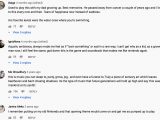UT Will Close Campus if a Student—But Not an Employee—Dies From COVID
July 17, 2020Even as the United States continues to break its own single-day coronavirus records, with more than 75,600 new cases confirmed on Thursday, plenty of colleges still plan on bringing students back to campus for the fall semester.
One such school is the University of Texas at Austin, the seventh largest university in the country, with more than 50,000 students. With coronavirus cases surging throughout Texas and Austin operating as a "red zone," or the highest possible level of safety concern regarding the pandemic, UT is barreling ahead with a plan to bring students and faculty back by Aug. 26. As part of the university’s plan to re-open, the school has created a list of scenarios that would trigger an abrupt full closure of campus, the first of which is a student death due to COVID-19.
On a campus of UT’s size, and where more than 10 percent of students come from outside of Texas and/or the country, the possibility of a student death is by no means a remote possibility. While the overall death rate remains unknown, but is lower among young adults, deaths across many states are now increasing along with cases. Immunocompromised people and those with underlying health conditions—two groups that absolutely include college students—are also at increased risk for death.
As if this situation weren’t bad enough, as the Texas Tribune highlighted, the list of triggers for immediate closure at UT doesn’t include a faculty or staff death, which has already happened as the school readies itself for students. On July 7, the university announced that a custodial services worker on campus died of COVID-19, the first known coronavirus-related death for the university system. As early contact tracing models have shown, those most at risk of contracting coronavirus are those who work in essential roles, servicing and cleaning places that others merely pass through. Why a staff death doesn’t trigger an immediate closure of campus—before it’s clogged with students—is inexplicable, and a signal that the university values tuition checks and football revenue over human lives.
UT also said it would close if there were serious intervention by the state government, but with Governor Greg Abbott once again staunchly refusing to do anything, that seems unlikely. It’s also a pretty huge copout for a school with a $31 billion endowment, and more than enough power and resources to simply do something about all of this itself.
The death of students is incredibly preventable, as country-wide (if inconsistently applied and enforced) policies like masks, quarantining, and social distancing have shown. Instead of waiting for a student—who is paying increased tuition to pursue an education during a pandemic—to die, the university could simply allow everyone to follow CDC recommendations, and continue classes online, from home. But so far, only 10 percent of 1,200 colleges tracked by the Chronicle of Higher Education (of the more than 4,000 colleges and universities in the U.S.) are currently planning for an online-only semester, with more than half operating on the assumption of some percentage of in-person classes. Another 30 percent are doing a hybrid model of virtual and in-person classes, where students are allowed to return to campus, but can take all classes online.
Many schools are setting aside budgets and even full-blown labs to account for necessary coronavirus testing, which will be necessary after students sit, eat, sleep, and party together in huge lecture halls and dorms. While Texas A&M, the largest school system in the country, plans to offer those tests to students for free, UT will charge $88 per nasal swab—leaving students to decide whether they can afford a test before getting one, and increasing the likelihood of the virus spreading, unchecked.
The experiment of bringing students back to campus is already well underway, as NCAA Division I schools bring back athletes for workouts and practices. As of June 26, more than 150 athletes had tested positive for coronavirus after traveling back to campus for workouts. Since then, Ohio State University paused all workouts after an undisclosed number of football players and staff tested positive. In college towns like Oxford, Mississippi, summer fraternity rush parties have led to small outbreaks of the virus.
These students represent only a tiny fraction of what would be a nationwide migration of students traveling to campuses throughout the U.S., should schools open for in-person classes this fall. UT’s own parade of 50,000-plus students is more than enough to spur an outbreak with far reaching consequences for students and the staff that keep the university running. At this point, preventable deaths feel less like an “if” scenario, and more like a “when.”
Follow Hannah Smothers on Twitter .


